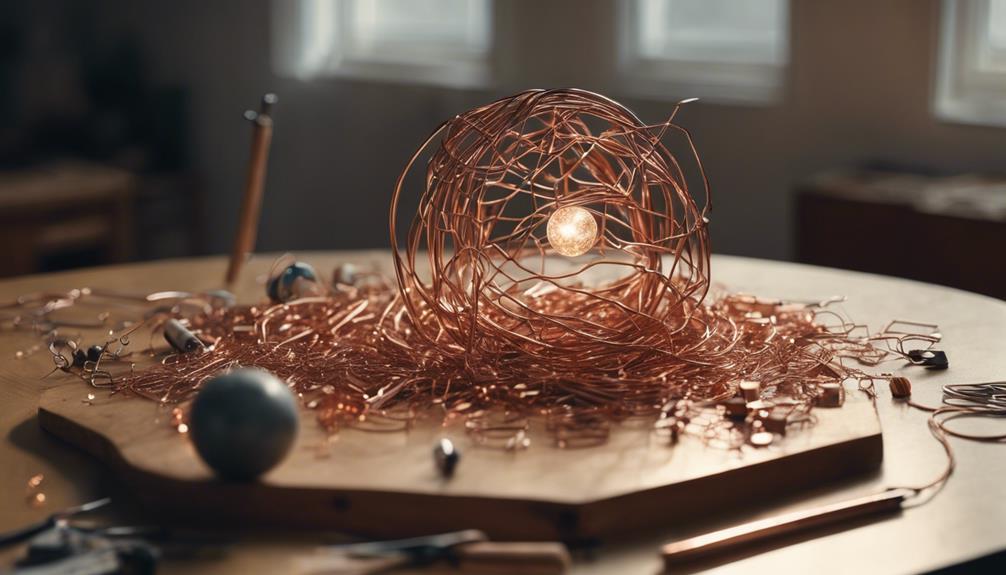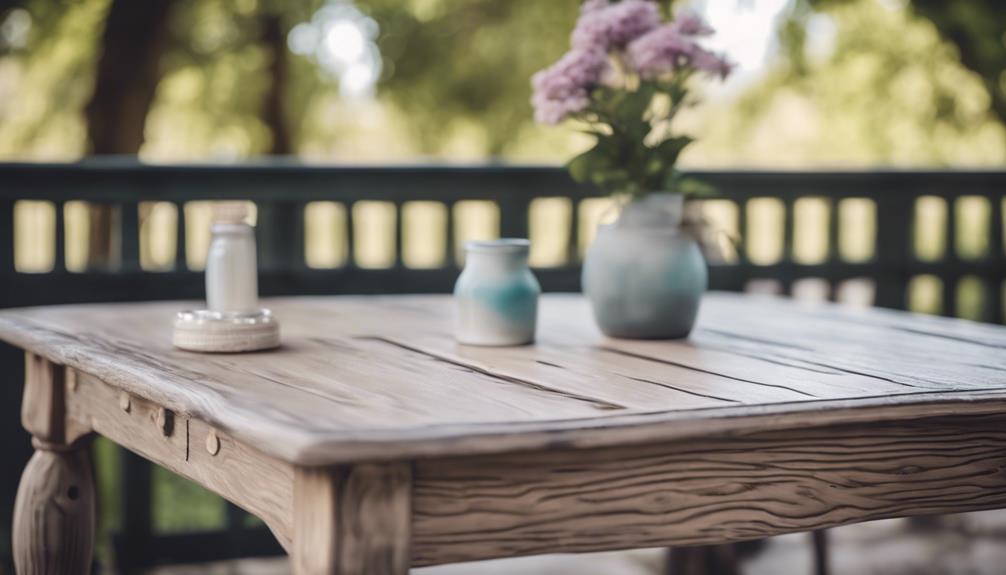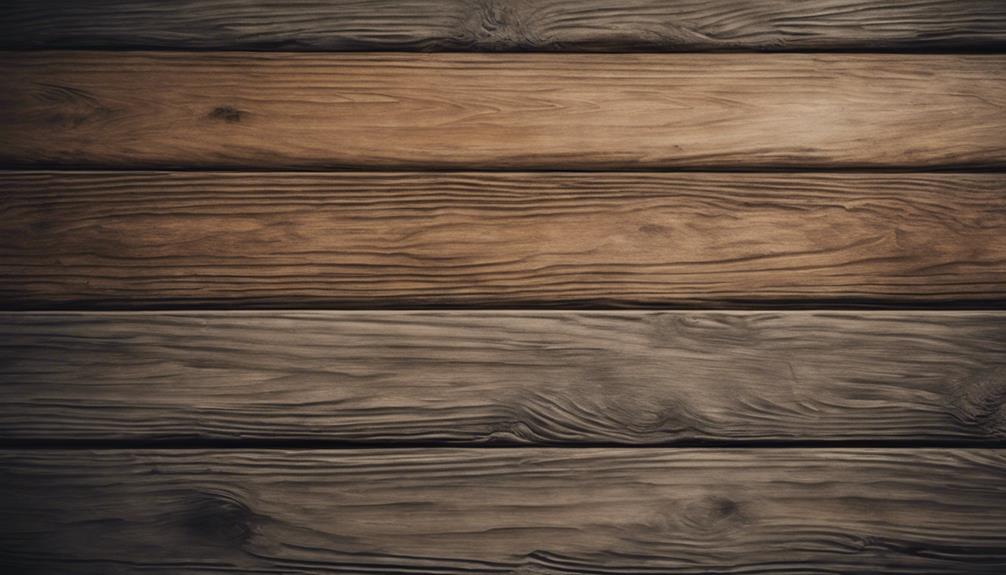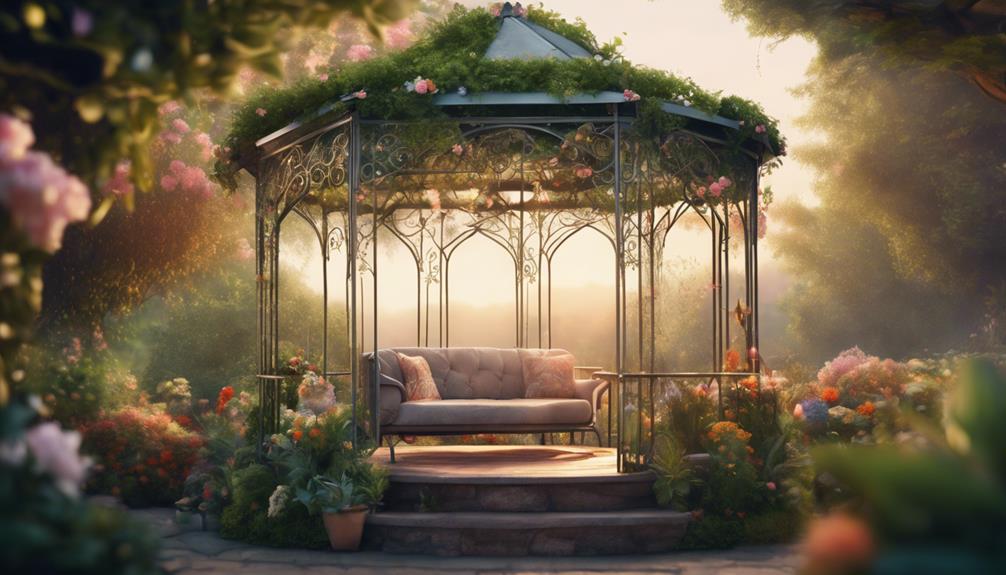You're about to commence on a meticulous journey to craft a stunning DIY sphere from a simple square paper template. Begin by preparing your template with precision, ensuring every corner and edge is aligned. Next, master the basic folds and glueing techniques to refine your sphere's shape. As you progress, you'll build the sphere structure, add rows and flaps, and shape the form with precision. With patience and attention to detail, you'll refine the sphere's edges and finalize the assembly. And as you follow these steps, you'll discover the intricacies of symmetrical DIY sphere creation.
Key Takeaways
• Use a square paper template to ensure accuracy and symmetry in your DIY sphere.
• Follow a detailed folding sequence and apply glue strategically to achieve a precise shape.
• Transform the paper template into pieces, assemble them in order, and fold and glue strips together.
• Align new pieces with existing folds, secure rows with glued tabs, and adjust the shape as needed.
• Apply glue strategically on tabs, confirm proper alignment, and allow each section to dry completely for a sturdy sphere.
Preparing the Square Paper Template
Cut a square piece of paper to the exact size required for your origami sphere, as even a slight deviation from the correct dimensions can impact the final shape. Make sure you're working with a square paper template, as this is vital for achieving the desired shape.
Accuracy in cutting and preparing the paper template is necessary for a successful origami sphere. You'll want to follow the instructions carefully to prepare the paper for folding, making sure that every corner is precise and every edge is aligned.
When you're preparing the square paper template, keep in mind that even the slightest mistake can throw off the entire project. Take your time, and double-check your measurements to make certain that your paper is cut to the exact specifications. This attention to detail will pay off in the end, as you'll be rewarded with a beautiful, symmetrical origami sphere.
Mastering the Basic Folds

With your precise square paper template in hand, start creating the mountain and valley folds that will form the foundation of your origami sphere. These initial folds are important, as they'll determine the overall shape and structure of your sphere.
The first thing you'll notice is that the first two folds are a bit different from the rest; they set the tone for the entire process.
Here are some key steps to focus on:
- Folding sequence: Follow a detailed folding sequence to make sure all folds are accurate and secure in the collapsing process.
- Glue application: Apply glue strategically to corners and edges to maintain the shape of the sphere and allow it to dry before proceeding.
- Fold refinement: Adjust the folds to refine the shape of the origami sphere, ensuring all flaps are in place and pressing down firmly to set the structure.
- Final touches: Check for any loose ends or gaps in the final touches to achieve a well-defined and visually appealing origami sphere.
Building the Sphere Structure
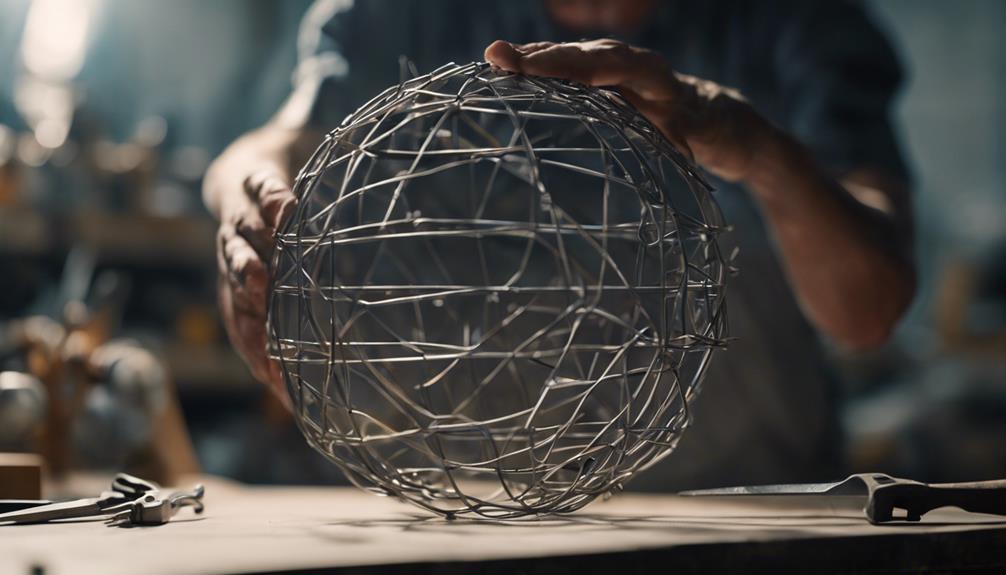
Your paper sphere template is now transformed into individual pieces, ready to be assembled into the sphere structure. It's time to bring your sphere to life! Using the provided template and sharp scissors, you've cut out the necessary pieces.
Now, it's time to assemble them into the sphere structure. To do this, line up the pieces in order and fold and glue strips of paper together to form the shape. As you add each strip, glue down the flaps to connect them securely. Continue adding rows to build up the sphere, adjusting the shape as needed, especially on row 5.
Make sure all tabs are securely glued in place. Finally, finish the sphere structure by adding the final two pieces for the north pole, allowing the glue to dry before use.
With each carefully placed strip, your sphere would begin to take shape, and before you know it, you'll be holding a stunning, intricate sphere in your hands.
Adding Rows and Flaps
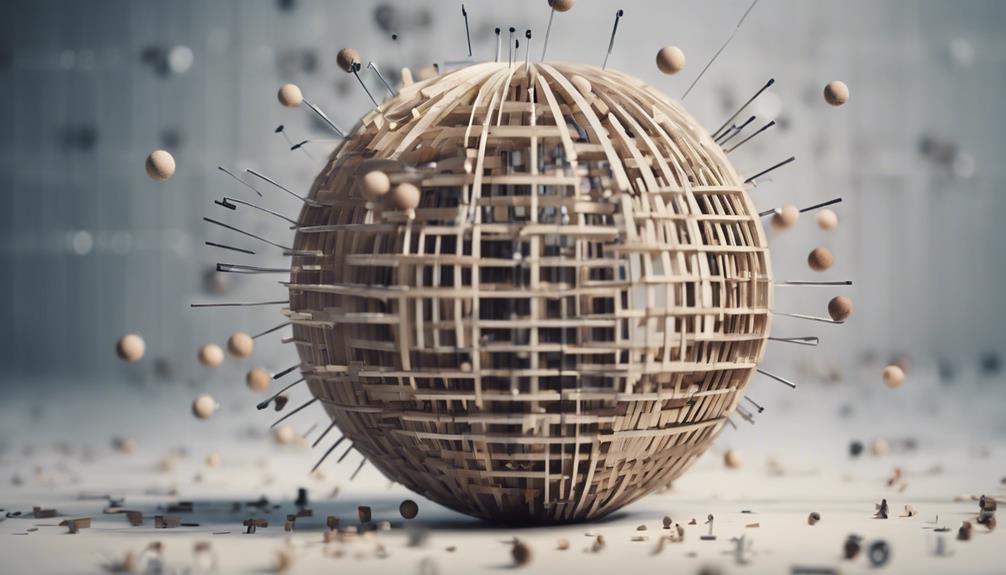
As you begin adding rows and flaps, align each new piece with existing folds to maintain the sphere shape, guaranteeing a smooth and even curve. This pivotal step requires attention to detail to achieve a polished finish.
Here are some essential tips to keep in mind:
- Secure the rows: Glue down the tabs connecting the strips to secure the rows in place, making sure they don't come undone.
- Monitor progress: Continue adding rows until the sphere is complete, watching it take shape gradually.
- Adjust the shape: On the fifth row, adjust the sphere shape to create the desired form, ensuring it's even and symmetrical.
- Finishing touches: Use a paintbrush end to make sure tabs are securely glued down for a polished finish.
Shaping the Sphere Form
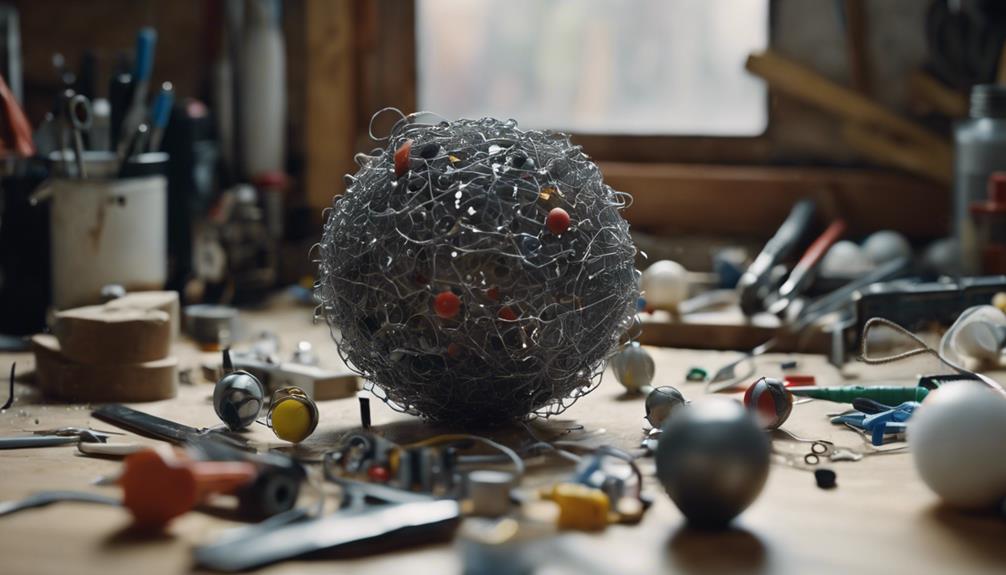
As you continue shaping the sphere form, you'll notice that each row of strips adds dimension and structure to the overall shape. Precision in folding and gluing is vital for creating a symmetrical and sturdy sphere.
Adjusting the angles of the strips in each row helps achieve the spherical shape. It's important to maintain consistency in your folding and gluing to guarantee a uniform sphere.
Sphere Shape Development
To create a sphere, you'll need to envision a three-dimensional structure with equidistant points from the center, ensuring a smooth and rounded appearance. This concept is vital in shaping the sphere form, as it allows you to accurately construct the sphere's surface. The surface of the sphere consists of points that are all equidistant from the center, giving it a smooth and rounded appearance.
To successfully develop the sphere's shape, follow these essential steps:
- Proper alignment: Make sure that the paper strips are aligned correctly to achieve a symmetrical shape.
- Folding technique: Master the art of folding paper strips to create a cohesive and even surface.
- Gradual build-up: Add rows of paper strips gradually to build the sphere's form, allowing it to take shape step by step.
- Three-dimensional understanding: Comprehend the concept of a sphere as a three-dimensional object to accurately shape and construct it.
Sphere Refining Process
You'll refine the sphere's shape by carefully adjusting the folds to create a smooth, rounded surface. As you work, make sure all flaps are properly aligned and tucked in to maintain the spherical form. Applying gentle pressure while shaping the sphere can help secure the folds and enhance the overall structure. Take your time, and don't rush this process – it's essential to achieving a well-defined sphere.
As you refine the shape, check for any irregularities or creases that may affect the symmetry of the sphere shape. Make adjustments as needed to create a cohesive and visually appealing appearance. Remember, the goal is to create a smooth, rounded surface, so take your time to get it right.
With each adjustment, gently press the folds to secure them in place. With patience and attention to detail, you'll be rewarded with a beautifully crafted origami sphere that showcases your skill and attention to detail.
Refining the Sphere Edges
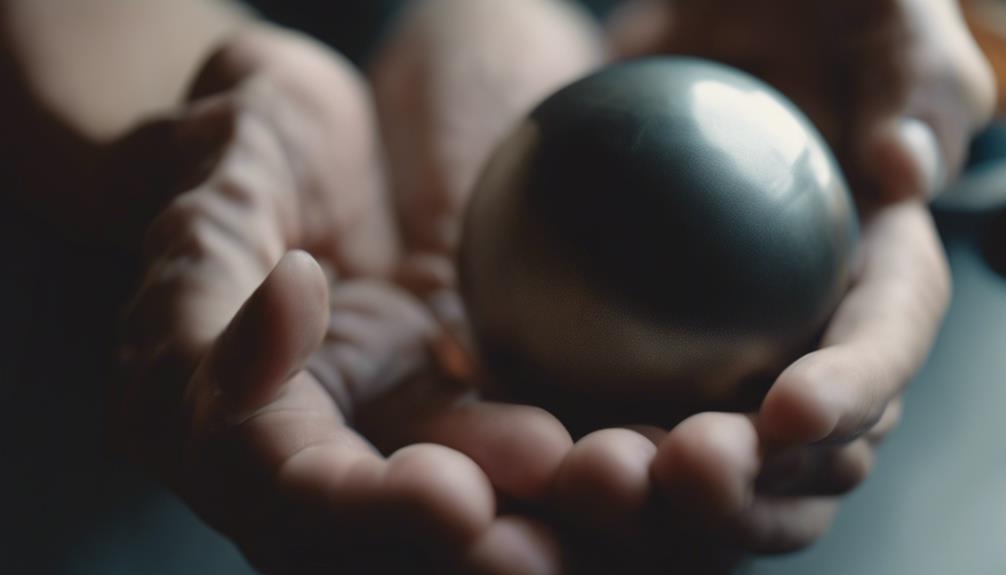
As you refine the sphere edges, you'll notice a significant difference in the overall appearance of your DIY sphere.
By employing edge smoothening techniques, you'll achieve a refined edge appearance that seamlessly blends into the sphere shape, creating a visually appealing finish.
With attention to detail and patience, you'll be able to craft a sphere with crisp, clean edges that showcase your craftsmanship.
Edge Smoothening Techniques
To ensure the best outcome, it's crucial to remove any rough or uneven edges by using edge smoothening techniques to achieve a polished finish on your DIY sphere. This step is necessary for creating a professional-looking sphere. To accomplish this, you'll need a sanding tool or sandpaper.
Here are some edge smoothening techniques to keep in mind:
- Use a gentle touch: Avoid applying too much pressure while sanding to prevent damaging the sphere.
- Sand in circular motions: Move your sanding tool in a circular motion to smooth out the edges without tearing the paper.
- Sanding removes imperfections: Sanding helps eliminate any rough edges, resulting in a polished finish.
- Enhance the overall appearance: By smoothening the edges, you'll enhance the overall appearance of your DIY sphere project.
Refined Edge Appearance
To achieve a refined edge appearance, carefully cut the paper strips with a sharp pair of scissors or a cutting machine to guarantee clean and precise edges on the sphere template. This essential step sets the tone for a polished, professional-looking sphere.
As you assemble the sphere, make sure to glue the edges of the paper strips together carefully to maintain a seamless appearance. Folding along the score lines accurately will also create crisp edges and a polished look for the sphere.
When attaching the strips together, apply glue with a paintbrush for precision to achieve a refined edge appearance. Don't forget to pay attention to the alignment of the edges as you add each row to maintain a smooth and uniform spherical shape.
Seamless Sphere Shape
You'll refine the sphere's edges by making precise folds and applying deliberate gluing techniques to create a seamless, rounded shape. This pivotal step requires patience and attention to detail to achieve a professional-looking sphere.
To guarantee a seamless sphere shape, follow these steps:
- Collapse the folds in the correct sequence to maintain the spherical shape.
- Confirm all flaps are securely in place to refine the edges of the sphere.
- Press down firmly on the model to set the structure and eliminate any gaps.
- Check for any loose ends or gaps to achieve a well-defined and seamless origami sphere shape.
Final Assembly and Glueing
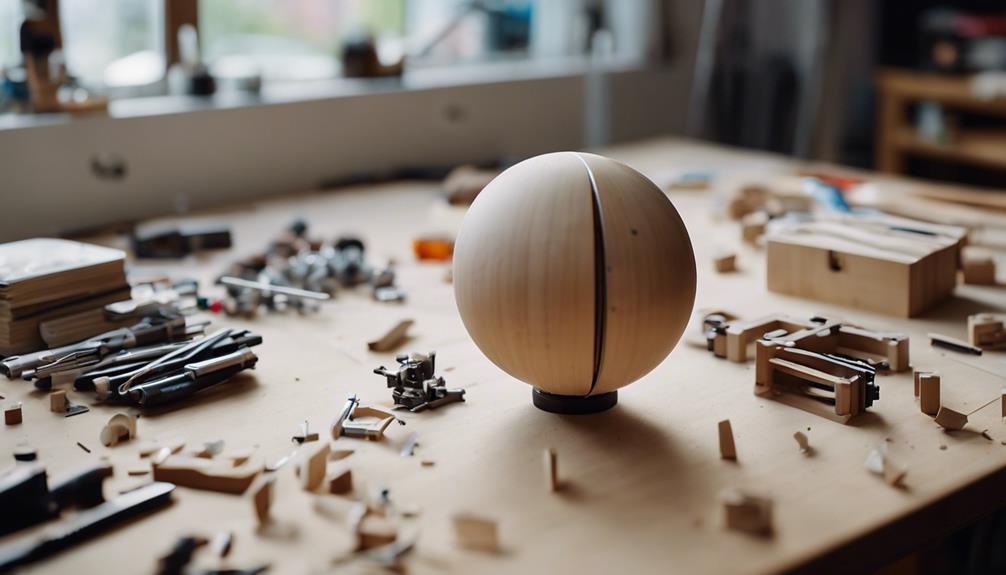
By carefully gluing the paper pieces together, you'll create a sturdy and uniform sphere that maintains its shape. To achieve this, apply glue strategically on the tabs of the paper sphere template for a secure bond.
Confirm proper alignment of the pieces before gluing to preserve the spherical shape. Using a paintbrush to apply glue is a great way to achieve precision and avoid excess adhesive. As you glue each section, allow it to dry completely before moving on to the next step. This patience will pay off in the end.
Double-check for any loose flaps or gaps before completing the final assembly of the sphere. A thorough inspection will guarantee a professional-looking finish. Take your time, and with each carefully placed application of glue, your sphere will begin to take shape.
With the final pieces in place, you'll be left with a stunning, uniform sphere that showcases your attention to detail.
Adjusting the Sphere Shape
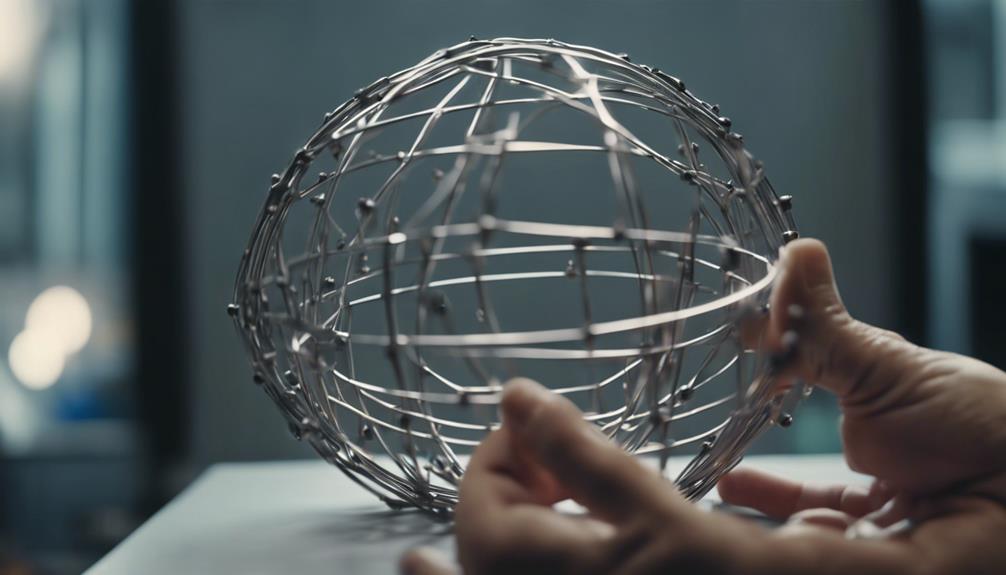
With your sphere's structure taking shape, you're now ready to fine-tune its form, making adjustments to achieve a perfectly rounded silhouette.
As you refine the shape, pay attention to the alignment of the pieces to maintain a round form. Secure tabs and flaps carefully when shaping the sphere to guarantee a tight fit and prevent gaps.
To achieve a smooth finish, use the edges of a paintbrush or a similar tool to help shape and secure tabs. Make small adjustments as needed to create a symmetrical and balanced sphere structure.
Here are some key tips to keep in mind:
- Align pieces carefully to maintain a round form.
- Secure tabs and flaps tightly to prevent gaps.
- Use a tool to shape and secure tabs for a smooth finish.
- Double-check the overall shape before allowing it to dry to avoid deformities.
Frequently Asked Questions
How to Make a Sphere Step by Step?
To make a sphere step by step, you'll need to follow a precise process. First, you'll cut out paper strips according to a template, ensuring accurate dimensions for a spherical shape.
Next, you'll fold the strips carefully to align them correctly, then glue them together gradually, paying attention to alignment and angles.
Allow the sphere to dry completely before handling to prevent structural issues.
How to Form a Sphere?
To form a sphere, you'll need to cut and assemble paper strips in a specific order, securing them with glue to create a strong bond.
As you add rows, follow a template or design to maintain the spherical shape, making adjustments as needed.
Be patient and let the glue dry completely before handling your finished sphere.
With careful construction and attention to detail, you'll be able to create a sturdy, well-proportioned sphere that's both visually appealing and structurally sound.
How to Turn a Circle Into a Sphere?
You're wondering how to turn a circle into a sphere. To achieve this, you need to add depth and volume to create a three-dimensional form.
It's essential to understand the concept of equidistant points from the center. By mastering light and shadow techniques, you can create the illusion of a spherical shape.
Practice drawing ellipses and experiment with shading and highlights to give your circle a three-dimensional appearance, effectively transforming it into a sphere.
How to Draw a Normal Sphere?
You're ready to draw a normal sphere. Start by understanding that a sphere is a three-dimensional form with equidistant points from its center, creating a round shape.
To draw it accurately, differentiate between a circle (2D) and a sphere (3D). Use ellipses to depict depth and dimension, and don't forget to apply light and shadow techniques to add realism.
Conclusion
As you've completed the DIY sphere guide, you now hold a stunning, geometric masterpiece.
To illustrate the potential of this project, consider the example of Emma, a high school student who created a sphere using recycled newspaper and showcased it at a local art exhibit. She earned praise from attendees and inspired others to try their hand at paper crafting.
With patience and practice, you can replicate Emma's success and create a breathtaking sphere that showcases your creativity and skill.
